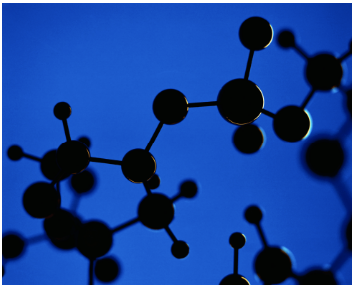We built LabArchives to help our users work more efficiently and achieve better outcomes in order to learn more. And a lot of our users are on that same mission.
LabArchives users can be found on every continent (except Antarctica) and work in an array of disciplines. Our professors, TAs, researchers, PIs, students and scientists are investigating all kinds of topics and are doing some pretty big things.
So what happened when one of our biochemistry professors and a video game designer came together to solve a problem? Some pretty epic solutions to old-school learning methods were born. Check it out…..
Who are you and what do you do?
I’m Gareth Denyer and I’m Professor of Biochemical Education at The University of Sydney. My job is to make sure that we give students the right tools and exercises to help them understand biochemistry.
I’m especially interested in anything that helps convey a sense of wonder about the way life works at the molecular level. It is jaw-dropping to see even a small snippet of the incredible complexity and choreography that happens 24/7 between all the structures in our cells … and anything that can illustrate that to my students is likely to inspire.
 Most people who have taken a Biochem course are familiar with the old ball and stick models used to show protein shapes. These just don’t convey the energy of real life proteins.
Most people who have taken a Biochem course are familiar with the old ball and stick models used to show protein shapes. These just don’t convey the energy of real life proteins.What is Peppy?
Peppy is software that allows students to explore the fundamental structures that make up proteins in Virtual Reality. We know that protein structure and chemistry is really hard for most students to grasp, and this is not surprising because it is abstract and complex. In the past, we have had students build ball-and-stick models to help them appreciate the 3D shapes of proteins. But these don’t convey all the energy, charges and jiggling of real life proteins.
Peppy not only lets students experience all the dynamics and forces of proteins, it also allows them to explore by building and changing the molecules – real sand-pit stuff!
How did you come up with the concept?
The idea came from Dr David Doak. David trained as a biochemist back in the 80’s. In fact, we think I may even have been his demonstrator at Oxford – he was in 1st year when I was a tutor there. After he finished his PhD in structural biology, his computer skills were put to better use in the video games industry. He made a name for himself directing several big hits for PS2 and N64 like Goldeneye and Timesplitters. Last year, he was fiddling around with VR representations of atoms and bonds… and suddenly the idea for Peppy was born.
What did it take to build it?
David and I were lucky enough to be introduced through colleagues and I immediately saw an opportunity to put his draft in front of a real class of students….The response was fantastic and that gave David all the encouragement that he needed to go full steam ahead.
Actually, and this is a very important thing. There is a strong parallel with LabArchives implementation here. When you have a great product in the teaching space you have to find academics that have the enthusiasm, drive and let’s face it, power, to implement the innovation. So much of the time, academics are excited by a new teaching tool, but if they have to go cap in hand to a conservative course director, nothing is likely to happen. With this project there was the extra problem that deployment needed a special facility – it is not yet trivial to run a class in VR for 20+ students at a time! But fortunately the planets aligned to put David and I in touch at a time when the University of Sydney had just invested in a VR lab – equipped with 26 stations!
Peppy in action.
What was your goal with this project?
The goal is to have Peppy adopted by every Biochemistry course! David has even made a non-VR version that can be run on any PC… you don’t get the full effect of the six-degrees of freedom that VR gives you, but so much experimentation and exploration can still be done.
Is Peppy in use yet?
Very much so. We have run it in several classes and are making improvements all the time, based on student response. Students give us great feedback and are excited about being involved in something ground-breaking that could help peers around the world unravel the mysteries of structural biology!
Who is it intended for?
We envisaged that our audience would be undergraduate biochemistry students, but the VR environment is so much fun that we think members of the public would enjoy it too. David’s gaming background could surprise here, of course! And although Peppy was built to teach, it turns out that the underlying physics and metaphor is compelling and may even find a research context.
What do you see in Peppy’s future?
We hope that it will get people excited about proteins!
The sky is the limit for where Peppy might go…. Teaching, research, museums, … who knows!
Thanks, Gareth, for such innovative and exciting work!
Interested in using Peppy? Download it here!
















